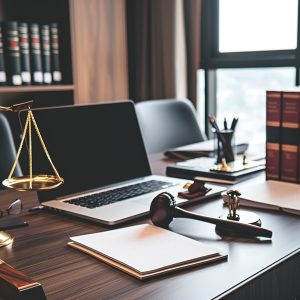What Is the Relationship Between Water Damage and Mold Growth?

Water damage and mold growth are two common issues that homeowners battle. Understanding the relationship between the two is essential as it forms the basis for adequate preventive strategies and paves the way for effective damage control and restoration.
Understanding Water Damage
Water damage is associated with multiple causes; it could be a result of severe rainstorms, a burst pipe, or simple issues like leaking faucets. Think of it as a silent destroyer; it can have disastrous effects on sinks, walls, floorboards, books, photos, clothes, and a multitude of other belongings. Water damage is more than just the visible deterioration and discoloration we see.
Within your home, it sets the stage for more serious problems like mold and mildew growth, which can have disastrous effects on your health and that of your family. Should you find water damage in your home, it is recommended to visit a professional or check websites such as https://puroclean.ca/barrie-on-puroclean-property-rescue-services/services/water-damage-restoration/ to assess and fix the issue in a timely manner.
The Category of Mold
Mold is a term that tends to make homeowners cringe, and rightfully so. Mold is a type of fungus that can grow almost anywhere, which includes both indoor and outdoor spaces. Its spores are microscopic and float in the air, and they may latch onto materials, people, or pets to be transported.
Mold prefers moist areas for growth, and unfortunately, areas with water damage provide a perfect breeding ground. Thus, let’s explore how mold growth and water damage are related. Also, always engage a competent mould removal company when you find a moldering issue.
How Water Damage Facilitates Mold Growth
1. Catalyst for Mold Growth
Water serves as the primary catalyst for mold growth. The connection lies in the severe moisture and dampness resulting from water damage. Mold spores, which are present nearly everywhere, require damp materials or surfaces to thrive and initiate growth. The presence of water damage provides the essential conditions for mold to flourish.
2. Role of Humidity
Apart from surface moisture due to water damage, elevated humidity levels within residential interiors can further facilitate mold propagation. Chronic humidity, even without an apparent water leak, can supply sufficient moisture for mold spores to establish and increase. This highlights the significance of controlling indoor humidity to prevent mold growth.
3. Temperature Factor
Mold thrives in warm and damp conditions. Homes with high temperatures and humidity are more susceptible to mold growth, especially when these conditions persist over an extended period. Controlling both temperature and humidity levels is crucial in preventing the conducive environment that mold seeks for propagation.
4. Food Source
Mold is not selective in terms of its growth substrate. It can thrive on almost any type of material, including wood, insulation, drywall, carpet, fabric, and even food. The versatility of mold in finding suitable food sources contributes to its adaptability and widespread presence in various environments.
5. Mold Spores Dispersal
Once mold has established itself in a particular location, it disperses spores into the air. These mold spores can travel to and colonize another location if the conditions are favorable—namely, the presence of moisture, a suitable food source, and appropriate temperatures. This dispersal mechanism allows mold to propagate and colonize new areas.
Property Restoration After Damage
Whether you’re dealing with water damage or subsequent mold growth, it’s crucial to act quickly. Property restoration is a process that involves drying out the affected area, sterilizing surfaces, and repairing or replacing damaged building materials. This can be a daunting task, but when you visit puroclean.ca and get the help of professionals, you can make your home safe and livable again.
Preventing Mold Growth After Water Damage
1. Prompt Action
Immediate response to signs of water damage is crucial. Swiftly addressing leaks, floods, or any water-related issues can prevent the onset of mold growth. Timely intervention helps minimize the moisture and dampness that mold requires for propagation.
2. Adequate Ventilation
Ensuring good ventilation in indoor spaces is a preventive measure against mold growth. Proper airflow helps in reducing humidity levels and expelling excess moisture. Adequate ventilation can be achieved through the use of exhaust fans, opening windows, and promoting air circulation within the affected areas.
3. Proper Insulation
Proper insulation plays a significant role in preventing mold growth. Insulating walls, ceilings, and floors help regulate temperature and minimize condensation. By controlling temperature fluctuations and reducing the potential for moisture buildup, insulation contributes to creating an environment less conducive to mold development.
4. Moisture-Resistant Building Materials
Choosing moisture-resistant building materials is an effective strategy for preventing mold growth after water damage. Materials that are less susceptible to water absorption and provide resistance to mold, such as mold-resistant drywall, can be used in areas prone to water exposure. This reduces the likelihood of mold finding a suitable substrate for growth.
5. Thorough Drying
After water damage, thorough drying of affected areas is paramount. Utilizing dehumidifiers, fans, and, if necessary, professional drying equipment ensures that residual moisture is removed. Proper drying prevents the lingering conditions that favor mold proliferation.
6. Regular Inspections
Conducting regular inspections of vulnerable areas, such as basements, attics, and crawl spaces, is essential for early detection of potential water damage. Identifying and addressing issues promptly can prevent prolonged exposure to moisture and mitigate the risk of mold development.
7. Professional Assistance
In cases of extensive water damage or if mold growth is suspected, professional assistance is recommended. Mold remediation experts have the knowledge, tools, and experience to assess the situation, conduct thorough remediation, and implement preventive measures to reduce the likelihood of future mold issues.
Conclusion
In conclusion, the relationship between water damage and mold growth is a critical component of home maintenance. As such, every homeowner should be knowledgeable about these issues and should respond promptly to control them, ensuring a safe and healthy living environment. Fortunately, professional help is readily available to manage such situations.







